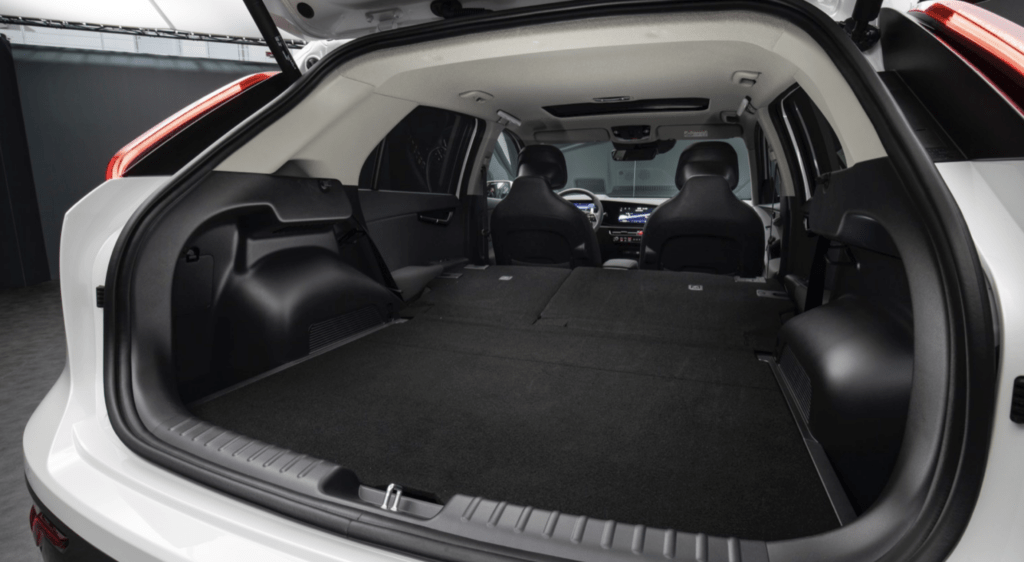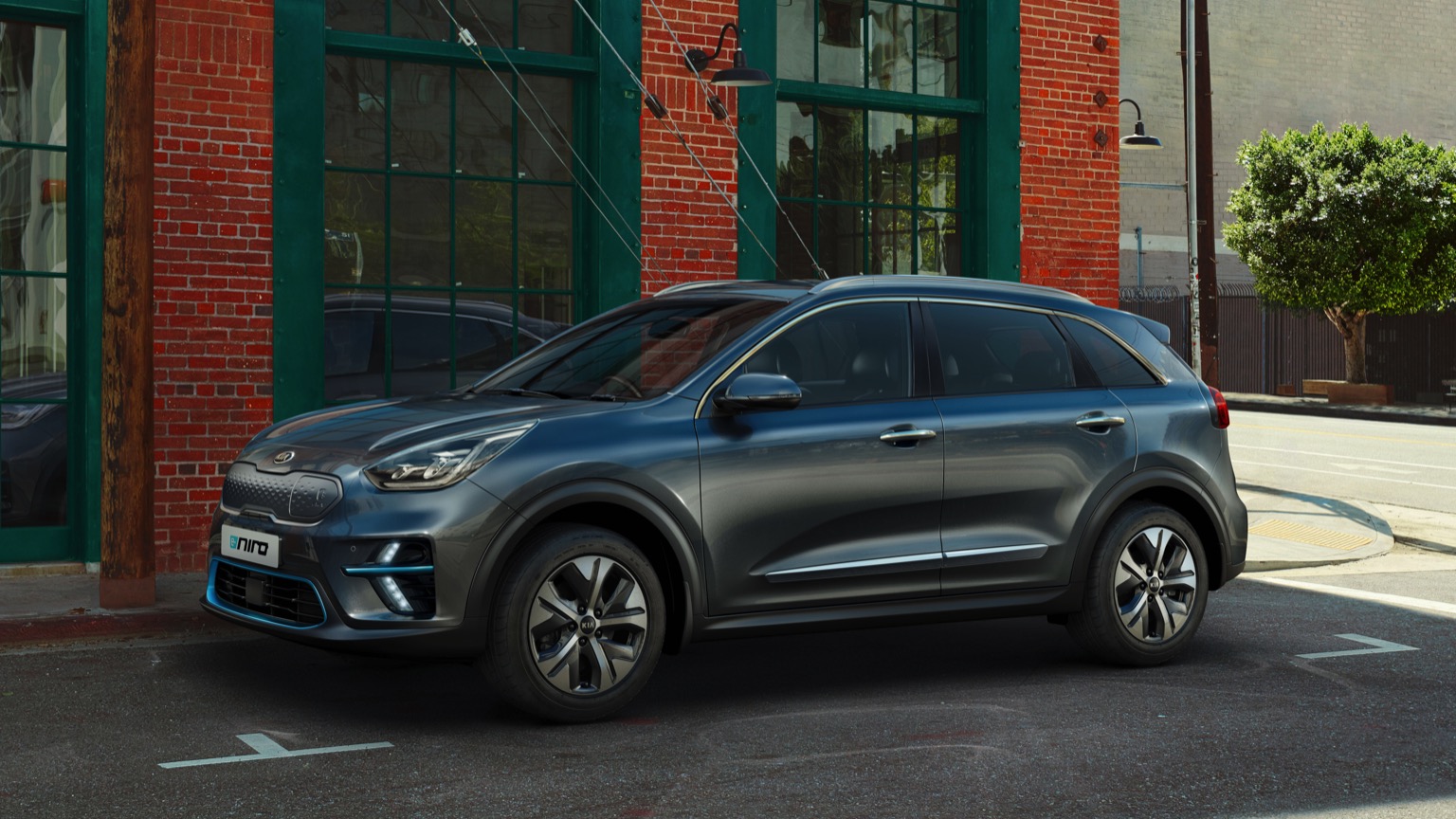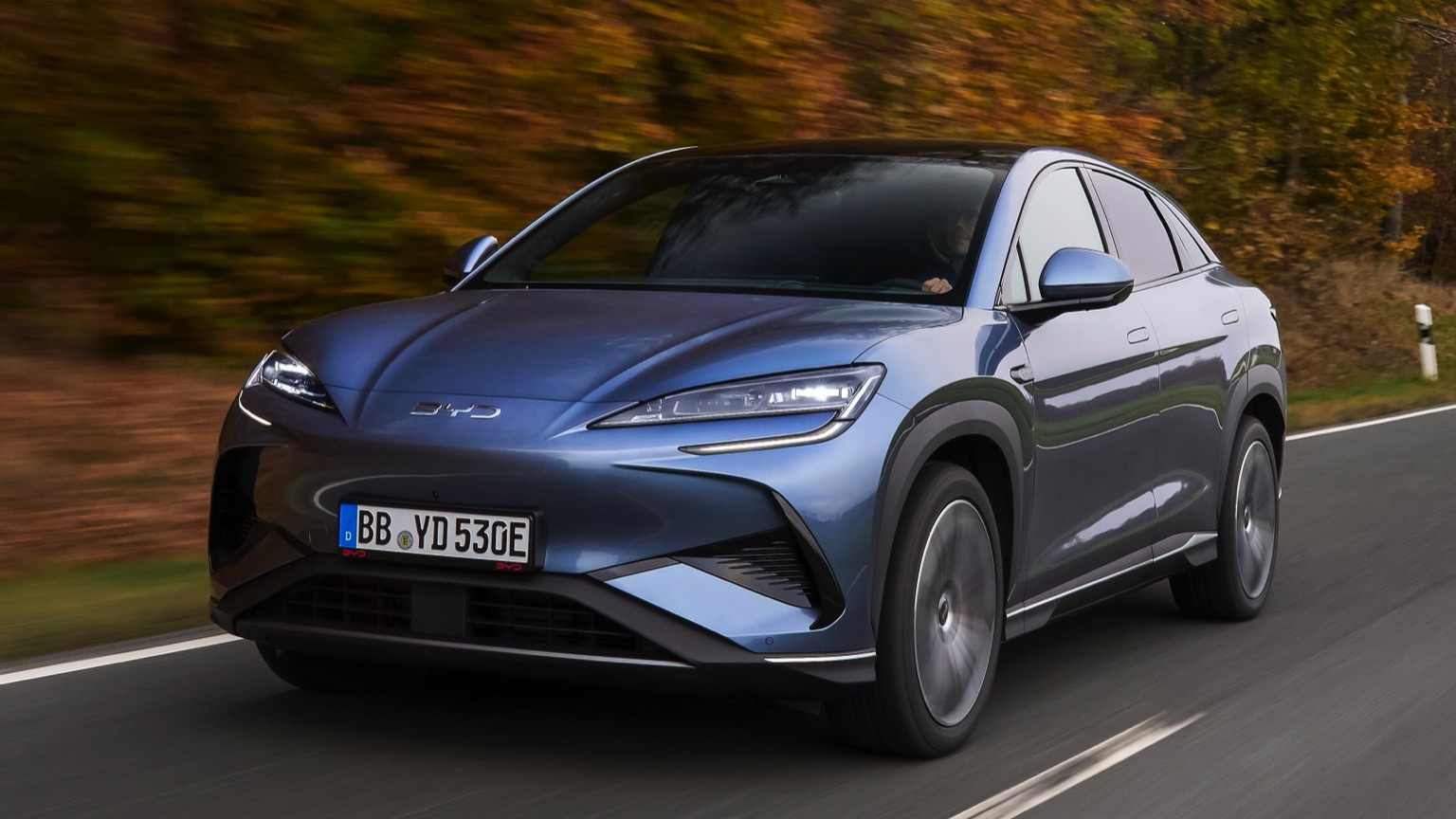Driving Range
In short, how many miles you can travel on a full charge. Is length important? Let’s not open that can of worms…
Efficiency
How many kWh of charge are needed to travel a set distance. The fewer needed, the more efficient your EV is. Easy!
Battery
The bigger the battery, the more power it can hold. In essence, fewer stops needed to top up your charge. Ahh, simplicity!
Top Speed
The maximum speed you can reach with your foot pressed hard to the floor. Important when escaping a zombie apocalypse, we assume.
Seats
Well, you don’t want to have to leave anybody at home… or do you?
Body
From stylish SUVs and compact crossovers, to curvaceous coupes and handy hatchbacks, there’s a perfect shape for everyone!
Isofix
The safe way to attach a child seat. Typically, these are hidden in the join between the back seats, alongside the crumbs from your last meal deal.
Safety Rating
A measure that considers the amount of safety kit installed, how a vehicle performs in crash testing and how safe it is for both pedestrians and cyclists.
| City - Cold Weather | 145 miles |
| Highway - Cold Weather | 105 miles |
| Combined - Cold Weather | 120 miles |
| City - Mild Weather | 220 miles |
| Highway - Mild Weather | 135 miles |
| Combined - Mild Weather | 170 miles |
Indication of real-world range in several situations. Cold weather: 'worst-case' based on -10°C and use of heating. Mild weather: 'best-case' based on 23°C and no use of A/C. For 'Highway' figures a constant speed of 110 km/h is assumed. The actual range will depend on speed, style of driving, weather and route conditions.
| Charge Port | Type 2 |
| Port Location | Front Side - Middle |
| Charge Power | 7.2 KW AC |
| Charge Time | 6hr 30m |
| Charge Speed | 22 mph |
| Fastcharge Port | CCS |
| FC Port Location | Front Side - Middle |
| Fastcharge Power (max) | 44 |
| Fastcharge Time | 47m |
| Fastcharge Speed | 130 mph |
General Charging (0 - 100%)
Charging is possible by using a regular wall plug or a charging station. Public charging is always done through a charging station. How fast the EV can charge depends on the charging station (EVSE) used and the maximum charging capacity of the EV
| Charging Point:Charging Point | Power:Power | Time:Time |
|---|---|---|
| Charging Point:Wall Plug | Power:2.3 kW | Time:20hr 15m |
| Charging Point:1-Phase 16A | Power:3.68 kW | Time:12hr 30m |
| Charging Point:1-Phase 32A | Power:7.36 kW | Time:6hr 30m |
| Charging Point:3-Phase 16A | Power:3.68 kW | Time:12hr 30m |
| Charging Point:3-Phase 32A | Power:7.36 kW | Time:6hr 30m |
Rapid Charging (10 - 80%)
Rapid charging enables longer journeys by adding as much range as possible in the shortest amount of time. Charging power will decrease significantly after 80% state-of-charge (SoC) has been reached.
| Charging Point:Charging Point | Average Power:Average Power | Time:Time |
|---|---|---|
| Charging Point:CCS 50 | Average Power:37 kW | Time: 47m |
| Charging Point:CCS 100 | Average Power:37 kW | Time: 47m |
| Charging Point:CCS 150 | Average Power:37 kW | Time: 47m |
| EVDB Real Range | 145 miles |
| EVDB Vehicle Consumption | 270 Wh/mi |
| EVDB CO2 Emissions | 0 g/mi |
| EVDB Vehicle Fuel Equivalent | 1.5 l/100mi |
| WLTP Real Range | 180 miles |
| WLTP Rated Consumption | 24.6 Wh/mi |
| WLTP Vehicle Consumption | 21.8 Wh/mi |
| WLTP CO2 Emissions | 0 g/mi |
| WLTP Rated Fuel Equivalent | 1.64 l/100mi |
| WLTP Vehicle Fuel Equivalent | 1.85 l/100mi |
| Acceleration 0 - 100 km/h | 9.8 sec |
| Top Speed | 96 mph |
| Electric Range* | 145 miles |
| Total Power* | 100 kWh |
| Total Torque* | 395 Nm |
| Drive | Front |
| Safety Rating | |
| Rating Year | 2016 |
| Adult Occupant | 83% |
| Child Occupant | 80% |
| Vulnerable Road Users | 57% |
| Safety Assist | 59% |
For more details on the safety rating of this vehicle, visit euroncap.com
| Nominal Capacity | 42 kWh |
| Battery Type | Lithium-ion |
| Number of Cells | 90 |
| Architecture | 400 V |
| Useable Capacity | 39.2 kWh |
| Cathode Material | N/A |
| Pack Configuration | 90s2p |
| Nominal Voltage | 330 V |
| Length | 4375 mm |
| Width | 1805 mm |
| Width (with mirrors) | N/A |
| Height | 1570 mm |
| Wheelbase | 2700 mm |
| Weight Unladen (EU) | 1667 kg |
| Gross Vehicle Weight (GVWR) | 2080 kg |
| Max. Payload | 488 kg |
| Cargo Volume | 451 L |
| Cargo Volume (Max) | 1405 L |
| Cargo Volume Frunk | N/A |
| Roof Load | 100 kg |
| Tow Hitch Possible | No |
| Towing Weight Unbraked | N/A |
| Towing Weight Braked | N/A |
| Vertical Load Max | N/A |
| Seats | 5 |
| Isofix | Yes, 2 seats |
| Turning Circle | 10.6m |
| Platform | N/A |
| Car Body | SUV |
| Segment | D |
| Roof Rails | Yes |
| EV Dedicated Platform | No |
* = estimated value. Average energy consumption and range based on moderate drive style and climate. Real-life values may differ significantly. Pricing information might not be actual for some regions. No rights can be derived from the information on this site.
Petrol
Electric
Charging with the intelligence of zappi
Potential savings
Cost to charge off-peak
Cost to charge off-peak and solar
Display cost to charge

*Petrol annual cost based on 10,000 miles at £1.41/litre. Electric annual cost based on 10,000 miles charging on a flat rate tariff costing £0.27p/kWh. Off-peak tariff based on Octopus Intelligent Go’s time-of-use pricing at 7.5p/kWh. Pricing of tariffs varies by region. Costs shown do not include any additional charges (such as standing charge) or discounts. Assuming 25% of your car battery is charged with solar. Cost projections exclude any export payments. These calculations are based on the manufacturer’s NEDC figures. Your mileage and performance may vary based on the weather, your driving style and type of route driven.

Kia e-Niro 39 kWh EV Charging Guide
This electric vehicle from Kia is more than a mode of transportation; it’s a statement of eco-conscious mobility without compromising on style and performance. In this guide, we delve into the distinct features that set the Niro EV apart, offering insights into its variants, charging capabilities, pricing, and the seamless integration of sustainability into everyday driving.
Join us as we explore the electrifying world of the Kia Niro EV, where efficiency, innovation, and style converge for a truly captivating driving experience. The Kia Niro EV, where sustainability meets sophistication.

How to charge the Kia Niro EV?
Charging the Kia Niro EV is a user-friendly process. Owners can opt for home charging using Level 2 chargers for daily convenience. Public charging stations, equipped with connectors compatible with the Niro EV, offer flexibility for longer journeys. The Niro EV is designed to adapt to various charging infrastructures, ensuring that drivers can choose the method that best suits their lifestyle.
How long does it take to charge the Kia e-Niro 39 kWh?
5 hours and 36 minutes*
*Using a standard 7kWh charger, such as zappi it would take 5 hours and 36 minutes to fully charge your 39kWh battery.
What is the range of the Kia e-Niro 39 kWh?
145 miles**The range of the Kia e-Niro 39 kWh with the 39kWh battery, differs between 105 miles and 220 miles depending on your driving conditions and the type of road. Typically, the average range from a full charge will be around 145 miles.
How much does it cost to charge the Kia e-Niro 39 kWh?
£2.94**It could cost just £2.94 to charge the Kia e-Niro 39 kWh, with the 39kWh battery, when fully utilising off-peak charging on an Octopus Intelligent tariff, at 0.075p/kWh. In contrast, peak charging on a standard rate of 0.34p/kWh can cost £13.33 to charge up.

What is the difference between the Kia Niro 2 and 3?
The difference between the Kia Niro 2 and 3 lies in the level of features and amenities. While both share the same electric drivetrain, the Niro 3 typically offers additional advanced features, technology upgrades, and enhanced interior comforts compared to the Niro 2.

How much is a Kia Niro EV?
The cost of a Kia Niro EV may vary based on the trim level, features, and regional factors. However, the Niro EV is positioned as a competitively priced electric vehicle, making it an accessible option for those looking to embrace sustainable driving without compromising on affordability. As of December 2023 the Kia Niro EV retails between £32,895 and £37,295 depending on the specification.

Is the Kia Niro EV all-wheel drive?
The Kia Niro EV is primarily offered in a front-wheel-drive configuration. While it doesn’t feature an all-wheel-drive option, the Niro EV excels in providing efficient and reliable electric performance for a wide range of driving scenarios.
Similar Electric Vehicles















